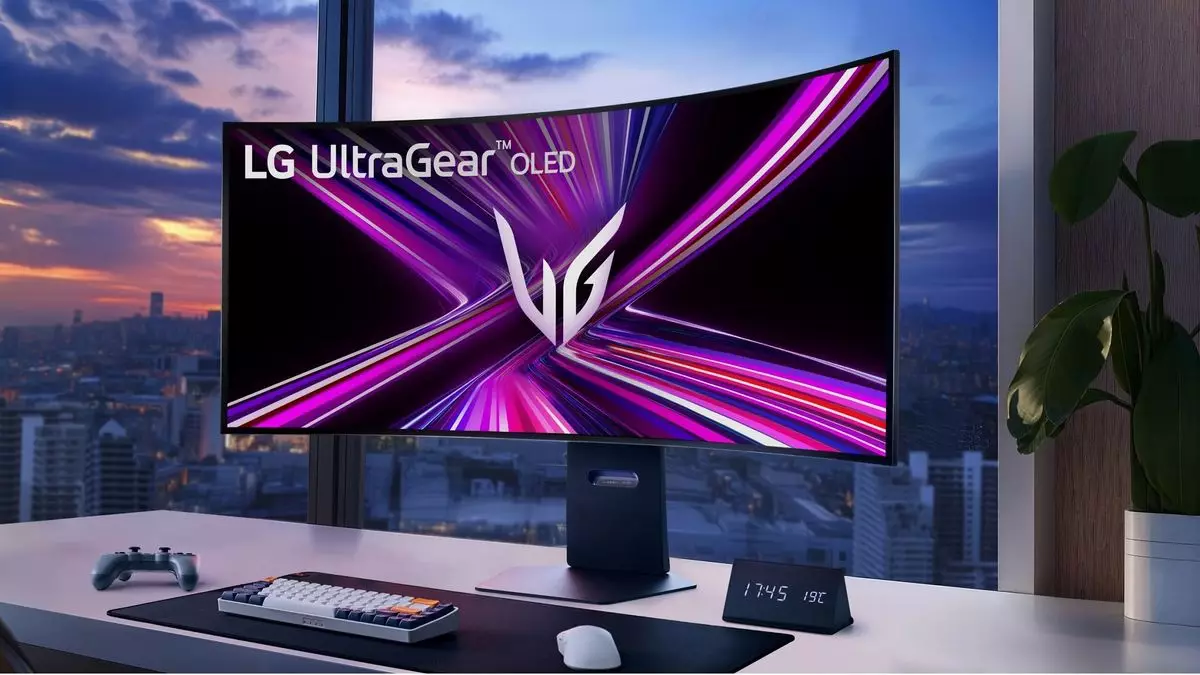In recent years, the transition towards OLED (Organic Light Emitting Diodes) displays in the PC gaming monitor segment has been nothing short of astounding. According to LG, a prominent player in this technology realm, OLED panels now comprise an impressive 22% of the PC gaming monitor market. This figure is remarkable, especially considering that this milestone was achieved merely two years following the launch of LG’s first OLED gaming monitor. Such rapid adoption highlights the growing consumer demand for superior display technology within the gaming community.
Interestingly, while OLED technology has made significant strides in the gaming sector, its uptake in the television market remains more subdued, with only 18% market representation. This contrast begs the question: why is the gaming community embracing OLED at such a faster rate than the television demographic? The initial introduction of OLED technology for gaming originated with the Alienware 34 AW3423DW, utilizing Samsung’s QD-OLED technology. LG soon followed suit, and the two companies played pivotal roles in bringing this vibrant display technology to gamers. However, despite the surge in popularity, the high cost of OLED monitors poses a considerable barrier to many potential buyers.
One of the most pressing issues concerning OLED gaming monitors is their pricing. The entry-level models, such as 27-inch 1440p displays from reputable brands, start at around $600, with many models exceeding the $800 mark. On average, those looking to purchase an OLED gaming monitor are likely to spend approximately $1,000. This price point inherently limits access for everyday gamers, rendering OLED monitors somewhat niche in nature, despite their growing market share.
For comparison, LCD monitors, which still dominate the market, are significantly more affordable. An LCD-based 27-inch 1440p panel can be acquired for as little as $200, while a 34-inch ultrawide variant starts around $250. Such stark price differences raise concerns about the accessibility of OLED technology for the average consumer. As the gaming industry continues to emphasize affordability and value, it remains crucial for OLED manufacturers to reduce prices to encourage broader adoption.
While the current pricing model continues to be a barrier, there is optimism regarding future price reductions in the OLED market. As production scales and competition increases, it is reasonable to anticipate that the cost of OLED monitors will decrease in the coming years. Many industry experts believe that a sub-$500 OLED monitor could become a reality within the next few years—provided advancements in technology and manufacturing processes help to drive down production costs.
Currently, the price disparity between OLED and LCD monitors seems incongruous, especially considering that the first 27-inch 1440p OLED displays once retailed for prices comparable to those of larger 42-inch 4K OLED TVs. Such inconsistencies complicate consumer choices and may deter potential buyers from diving into the world of OLED gaming monitors.
Beyond pricing concerns, OLED technology has historically grappled with issues surrounding brightness levels. However, advancements announced at CES suggest a shift in this narrative. Companies like Samsung and LG are introducing new OLED panel technology aimed at significantly improving full-screen brightness capabilities—reportedly reaching up to 400 nits. This progression could effectively address the brightness limitations that have plagued OLED displays in the past. If these improvements prove operational, we could soon be witnessing models capable of at least 350 nits full-screen brightness by the year’s end.
Should this breakthrough materialize, it would not only enhance the viewing experience for gamers but also establish OLED as a more viable alternative to LCD technology. However, there remains concern regarding the potential price premium associated with these advanced models.
The rapid adoption of OLED gaming monitors signifies a shift in consumer preferences towards premium display technology. Despite their high entry price and historical technical limitations, the sustained increase in market share indicates that gamers recognize the benefits of OLED technology. As production efficiencies improve and new technologies emerge, the landscape of gaming displays may witness significant changes in accessibility and performance.
With a hopeful eye towards the future, gamers can anticipate the day when cost-effective OLED monitors become readily available, ultimately transforming the gaming experience for a wider audience. As the convergence of improved technology and competitive pricing unfolds, the allure of OLED displays will undoubtedly grow, solidifying their place in the world of PC gaming.

